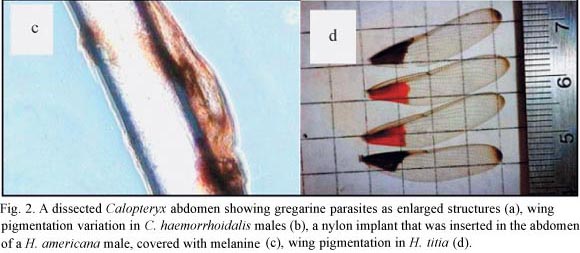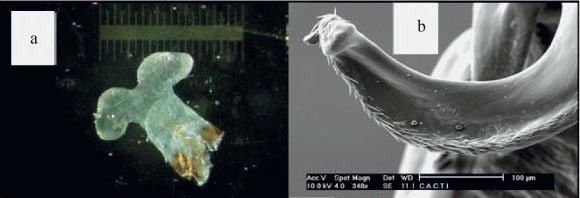We review the studies of evolution and ecology in the Calopterygidae. Adults are easily distinguished for their pigmented wings and territorial behaviour. Three genera have been well studied: Hetaerina, Calopteryx and Mnais. Larvae develop in riverine aquatic environments. Selection operates at this stage to produce large muscle mass for adults. The adult spends some days until sexually ready. During this time, it feeds extensively to produce muscle fat for egg production and flight. However, gregarine parasites may ingest the fat reserves. Males may use two mating tactics or strategies that may be genetically (Mnais) or environmentally (Calopteryx and Hetaerina) determined: territoriality and nonterritoriality. In Mnais, these strategies appear balanced in fitness terms. Males of Calopteryx, Mnais and Phaon show a precopulatory courtship that is not the case for Hetaerina. Male wing pigmentation seems to signal how good the male is to deal immunologically with parasites to females during the male courtship. During copulation, males displace the sperm the female has stored in the storage organs from previous matings. There is an enormous variation in male sperm displacement mechanisms and ability, and in genitalic morphology in both sexes. This variation possibly results from a coevolutionary game between the sexes to control stored sperm. After copulation, males guard females apparently to avoid that other males take the female in copulation. Our review suggests sources for research in this family.
Fat reserve; wing pigmentation; immune ability; genitalic coevolution









